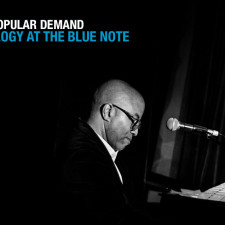Yeah, Yeah, Yeahs – Maps (Original Version)
Musical improvisation obviously cannot be limited to one particular genre of music; anyone from rappers such as Snoop Dogg to country musicians such as Garth Brooks has the ability to modify the structural components of their work as they see fit. However, these modifications differ in significance depending on the context in which they are carried out. For example, if they are performed during a recording session, listeners from around the nation all have access to the same original song. However, they may never hear any improvisations of this song, especially on a typical album where only one version of most songs makes it to the final cut. On the other hand, if the musician decides to improvise during a live concert, the only people who have access to these stylistic changes are those who attend the concert and are familiar with the musician’s recorded or “original” work.
When musicians enter the recording studio in order to produce an album, they often weather countless hours performing the exact same song until they believe they have reached a point of “perfection” in which the work is ready to be sold to the public. This “perfection” is sometimes not even determined by the artists themselves; in fact, a situation often arises in which a record label representative or producer decides which versions of which songs will rake in the most profit.
This most likely means that the final cut of each song has greater potential to simply provide listeners with more of the same music that has already been made popular by their antecedents and innovators of the past. Consequently, the public loses the opportunity to listen to each improvisation individually. One has no way of knowing if any of these lost tracks of music could possibly bring something new to the table in the music industry, namely an innovative chord progression, timbre, melodic structure, etc. The only way in which musical improvisation can be made manifest to the general public is if artists decide to remix their work, such as performing acoustic versions of songs or adding new instruments to the mix among other measures.
Although only a select group of people can hear the improvisation that occurs at a concert in person, the widespread use of the Internet allows listeners to upload videos of shows that they attend. At most concerts, musicians usually do not perform their work in the exact same manner as it has been recorded on their albums. Consequently, those who choose to attend live shows have a remarkable opportunity to witness artists as they attempt to create new musical ideas and advance our views of what we as a society consider to be “popular music.”
Once the concert ends, those who have chosen to film the show can make these improvisations instantly accessible to the rest of the world if they upload their videos to sites such as YouTube. As a result, people from all walks of life have the opportunity to listen to improvisations that may eventually help change our musical tastes if they are widely accepted by the general public. This degree of change is likely possible to obtain when the masses are given widespread access to improvisation. Conversely, recordings only allow people to consume the same version of a particular song unless artists decide to release a limited amount of remixes or improvisations on a special album.
Here are examples of how improvisation, by the band the Yeah, Yeah, Yeahs on their song “Maps”, can create noticeable artistic differences between the original version compared with the album remix, and the live performance of the song in concert.
Yeah, Yeah, Yeahs – Maps (Strings/Acoustic Remix)
Yeah, Yeah, Yeahs – Maps ( Live Footage from All Points West Festival 2009 in NYC)
Kevin Hirsh
Tags: Garth Brooks, Improvisation, Live Music, Recorded Music, Remix, Snoop Dogg, Yeah Yeah Yeahs, YouTube

 Share On Facebook
Share On Facebook Tweet It
Tweet It




